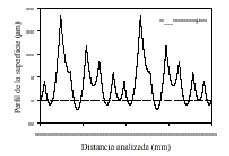Machining
Influence of the errors of the tool on the surface roughness in milling front operations
P franco, M. Estrems, f. Faura
Department of engineering materials and workmanship, Polytechnic University of CartagenaC / Doctor Fleming s/n, 30202 Cartagena.
Tel: 968 325388, Fax: 968 326445, Email: patricio.franco@upct.es.
01/12/2002 1. Introduction
The surface roughness in machining operations is given by various factors such as the advance, geometry of the tools - lie and wear of the tool, and tools - while multifilo as those used in milling front also is related to errors in positioning of the plates [1-2].
Baek et to the. [1] developed a method to predict the profile of the surface depending on the errors of the tool, but not including any statistical treatment of them.
This work proposes a methodology for the selection of the optimal progress to obtain a roughness determined with some reliability based on the statistical knowledge of the mistakes of the tool.
2. Procedure
It is carried out an analysis metrology of the axial diverts-ing (ea) and radial (er) of the teeth of the tool, as well as longitudinal deviation (to the) and transverse (at), with an estimator of the mean and the variance of these parameters. Different populations of errors of the tool are used to determine the surface finish for different advances are generated using the Monte Carlo method.
Based on the results obtained with different populations of errors, it is estimated the average value of surface roughness for each advance with their corresponding uncertainty. Subsequently carried out a series of essays on which checks the validity of the model and discusses the discrepancies between theoretical and experimental results.
3 Results
Figure 1 shows the profile of the surface for a preview of 0,924 mm/rev and certain values of errors of the tool. For each group of errors of the tool Gets a graphic similar to figure 1, which removes the value of Ra. As noted Baek et to the. [1], for small values of progress not always progress decreased translates into reduction of Ra, so in this work is carried out a statistical study of the results of these graphs, obtaining the advance that provides surface finish required with some reliability.
Figure 1.Perfil of the surface for a preview of 0,924 mm/Rev.
4 Conclusions
After comparing the results of the model with the experimental observations, it can be concluded that this method allows to properly select the value of the optimal progress in operations of milling front with round plates.
5 References
[1] D.K. Baek, T.J. Ko and H.S. Kim, International Journal of Machine Tools and Manufacture, 41, (2001) p. 451-462.
[2] W.B. Saï, N.B. Salah and J.L. Lebrun, International Journal of Machine Tools and Manufacture, 41, (2001) p. 443-450









